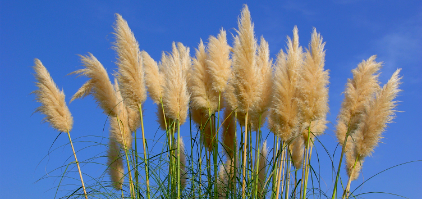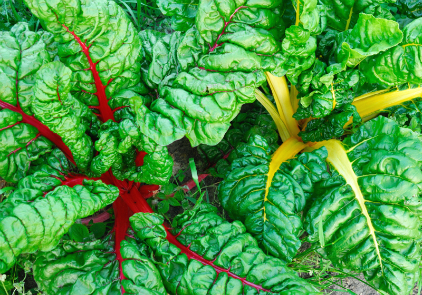
bringing nature, nurseries and gardeners together Feb 28, 2019
|
|
Nursery notes: Sunshine Community Gardens Spring Plant Sale: this Sat. 9 a.m. - 2 p.m. 4814 Sunshine Dr. This annual event, with massive tents crowded with beautiful plants, is not to be missed! You can fill your spring garden with organic and heirloom vegetable starts and herbs. Choose from over 120 colorful varieties of tomatoes, 80 varieties of peppers, eggplants, and tomatillos. Sunshine Gardens ❦
Keep Waller Creek Beautiful: join volunteers on Saturday from 8 a.m. - noon to clean up this urban creek between 45th and 53rd Street. Meet behind Epoch Coffee, 221 North Loop. Shoes with closed toes recommended. KAB ❦

'Old thymers' David Sargert and Dwight Littleton (above) will be at McCoys this weekend. Each day at noon they will teach gardeners 'How to Grow Organically 365 days a Year in your Backyard.' From 1 - 4 p.m. they will be selling organic baby veggies, herbs, decorative plants and organic seeds from $1.50 to $3.00. FM 1626-Manchac
Ten seed-starting tips: learn about airflow, moisture levels and use of heat mats to get seedlings off to a healthy start in this article by Adriana Vargo, manager of the Thomas Jefferson Center for Historic Plants. Fine Gardening ❦

Pampas grass sales drop due to swinging connotations: Once a common plant outside U.K. suburban houses this giant grass from Argentina has became known as a sign that the residents were swingers, reports The Independent. ❦
The Austin Garden is sponsored by Hays Free Press 
Central Texas Gardener: tips on gardening in arid conditions from former Austinite Flora Grubb of Flora Grubb Gardens. Zach Halfin from Thigh High Gardens in San Marcos shows the tools you need to prune your fruit trees. Saturday at 4 p.m. Sunday 9 a.m. KLRU ❦
 Ten Activities for March Ten Activities for March
by Chris Winslow
1. Cut back roses and shape your shrub roses. Those tall bushes can be trimmed to 1 ½ to 2 feet in height with open centers. Use a sharp pair of pruners and a good pair of leather gloves. Climbing roses should be left un-pruned until after their spring bloom. March is also a good time to add roses to the landscape.
2. Care for fruit trees. There is still plenty of time to spray wintering insects with dormant oil. Pruning to open up the centers will help to reduce disease problems with better air flow. Added sunlight will help to ripen and color the fruit. A few ideas of additions to your orchard: peaches, pears, plums, nectarines, figs, cherries, apples, pomegranates, and persimmons.
3. Tend vegetable garden. The first half of the month is the right time to plant potatoes, asparagus crowns, broccoli, cabbage, cauliflower, Brussels sprouts, mustard and collard greens, carrots, radishes, Swiss chard, and lettuce.
4. Care for lawn. Early March is a great time to cut the lawn close and aerate if the soil has become compacted. A quarter to half inch top dressing of manure-based compost like Dillo Dirt or Happy Frog Soil Conditioner will go a long way to revitalize turf grass with nutrients, microbes, and beneficial bacteria. If the soil below the turf grass is poor, aeration and Dillo Dirt will work wonders. As a top dressing, Dillo Dirt mixed with a little sand can help to level off the low places.
For the second half of the month, with the last average frost date is behind us, we can shift to warm season gardening. Some gardening activities to concentrate on:
5. Fertilize turf grass. This will begin to grow as the ground warms up. An organic lawn fertilizer with a 3 -1- 2 ratio can be applied to the lawn at the rate of 10 to 15 pounds per 1,000 square feet. Be sure to water the lawn fertilizer in thoroughly after applying.
6. Insect control. With new growth from all our trees, flowers, and shrubs… come the insects. Aphids will show up on just about everything. A safe, organic spray, like All Seasons Oil will keep them at bay without harming the environment or poisoning ourselves. Our oak trees will be shedding their leaves and putting on new growth any week. With this change come the oak leaf rollers and forest tent caterpillars. Sprays with organic B.T. should be an effective and safe way to control these damaging insects. Look for products with names like Thuricide and Dipel to do the trick.
7. Planting vegetables. The vegetable garden for the latter half of the month will see an explosion of activity. It’s finally time to plant tomatoes, peppers, snap beans, limas, corn, cantaloupes, cucumbers, eggplant, and squash.
8. Flower garden. The winter flower garden should be in full force. Those snapdragons you planted back in October should be starting their second (and best) bloom. Flowering cabbage and kale should be at their peak. New annuals to set out are alyssum, dianthus, lobelia, phlox, geranium, gerbera daisy, petunias, marigolds, zinnias, and nasturtiums.
9. Perennial care. Keep an eye out for those returning perennials; don’t mistake them for weeds and pull them up. Better to surround them with fresh compost and a little mulch. This spring will bring a world of new perennials to plant. Many will be natives that will thrive in our climate with minimal care and minimal water. Some to look for are ox-eye daisy, black-foot daisy, skullcap, rudbeckia and gloriosa daisies. There will be tons of salvia and lantana varieties to choose from.
10. Have fun. Above all, get outside and enjoy yourself. Nothing can be more rewarding than eating homegrown vegetables and enjoying your own beautiful landscape. Happy gardening everyone! ❦
|
 It's About Thyme Legacy Publications.
Contact newsletter editor Darrel Mayers with any ideas for articles or interesting links at internationalrain@yahoo.com (hitting 'reply' to this email won't work) |
|
|